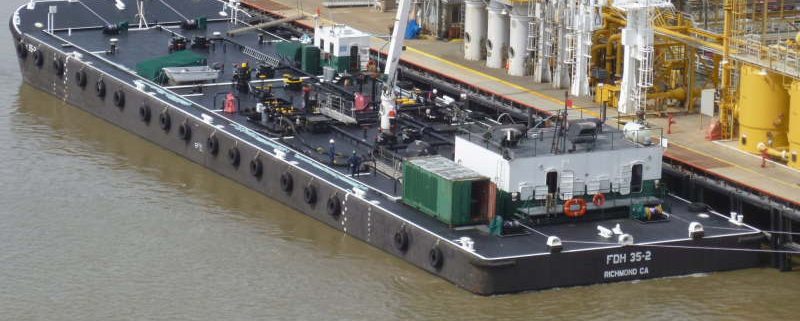Maritime youth programs grow as worker shortage deepens
GALVESTON
The number of programs aimed at encouraging young people to enter the maritime industry is surging as area leaders attempt to reverse a deepening shortage of skilled workers.
Facing an aging workforce, maritime industry leaders are struggling to find skilled workers to fill vacant positions. It’s a challenge that many community leaders have chosen to address by getting children interested in the career options early.
About 150 people work in the Gulf Copper Dry Dock & Rig Repair shipyard on Pelican Island, and finding 25 more people to fill empty positions has been a struggle, General Manager Craig Marston said.
“If things picked up too fast, I would be hard-pressed to man the job,” he said.
Maritime industry leaders are making a concerted effort to get young people interested in the field, in hopes they’ll join the workforce in the future, Marston said.
Three interns are working at Gulf Copper now, and for Marston, the primary benefit is introducing them to the industry, he said.
The shortage of workers and the importance of the maritime industry to the local economy are among the reasons the Galveston Regional Chamber of Commerce started a maritime career summer camp, President and CEO Gina Spagnola said.
The chamber started organizing the camp in 2013 in a partnership with the Sea Star Base Galveston, which specializes in youth education, when it saw a need to encourage more children to go into the maritime industry, Spagnola said.
“It’s been hugely successful,” she said, explaining that students in the camp learn there are many career options in the maritime industry, from administrative jobs to engineers.
For example, people can work in on-shore jobs like those at the Port of Galveston, another partner the chamber is working with to encourage more students to enter the industry.
At the camp, students visit the port to learn about the operational side of running the maritime field, and that there are still maritime jobs they can do even if they don’t want to spend months on a boat, Spagnola said.
Learning about the vast variety of maritime jobs was eye-opening for Odyssey Academy superintendent Jennifer Goodman, who grew up in Galveston County.
“I really didn’t know that much at all about the maritime field,” Goodman said.
Goodman helped form the chamber’s maritime summer program because she thought educators were missing an opportunity to teach students about the industry, she said.
Getting students interested in maritime careers is a matter of introducing them to the ocean, said Suzi Hanks, marketing and community outreach manager at the Sea Star Base.
The base has day camps and fishing camps for students, she said, adding that during spring break, it will have a camp devoted exclusively to maritime careers.
“If you ask kids around the Galveston-Houston area, they know the ship channel, and they’ve heard of the port, but they don’t know the economy of it,” Hanks said. “Many of them have never been on a boat before.”
Maritime jobs can pay as much as $70,000 a year even for recent graduates, said officials at San Jacinto College in La Porte, which has an associate of applied science degree in maritime transportation.
And the jobs are in demand.
The federal government estimates the country will lack about 70,000 mariners by 2022, said John Stauffer, associate vice chancellor of the Maritime Technology & Training Center at San Jacinto College.
Changes in technology and U.S. Coast Guard training requirements are inspiring many mariners to retire early, Stauffer said.
The college has long offered courses in the maritime industry, but its associate degree is only a few years old, said Amy Arrowood, director of the maritime transportation credit program.
The college expects to graduate 20 students in August, she said.
“The biggest thing is making kids aware that this career pathway exists,” Arrowood said. The industry needs people to go into entry-level jobs and start climbing the ranks, she added.
Fear of the water — because they aren’t used to spending time on it — could be one roadblock keeping students from pursuing careers in maritime.
“You eliminate fear through education,” Spagnola said.
Preparing students for the next five years of maritime demand is what community leaders are trying to achieve with camps and classes, Spagnola said.
Marston needs welders, crane operators, environmental technicians and fitters, who cut materials into the right shapes, he said.
“These are very, very good-paying jobs with benefits and everything,” Marston said. “It’s just challenging to get people who are willing to do that.”
By: Keri Heath The Daily News
Courtesy of The Daily News – Galveston County
https://www.galvnews.com/news/article_88489aab-e1c0-53c5-9fd4-9cf1dbd64bf6.html




Leave a Reply
Want to join the discussion?Feel free to contribute!